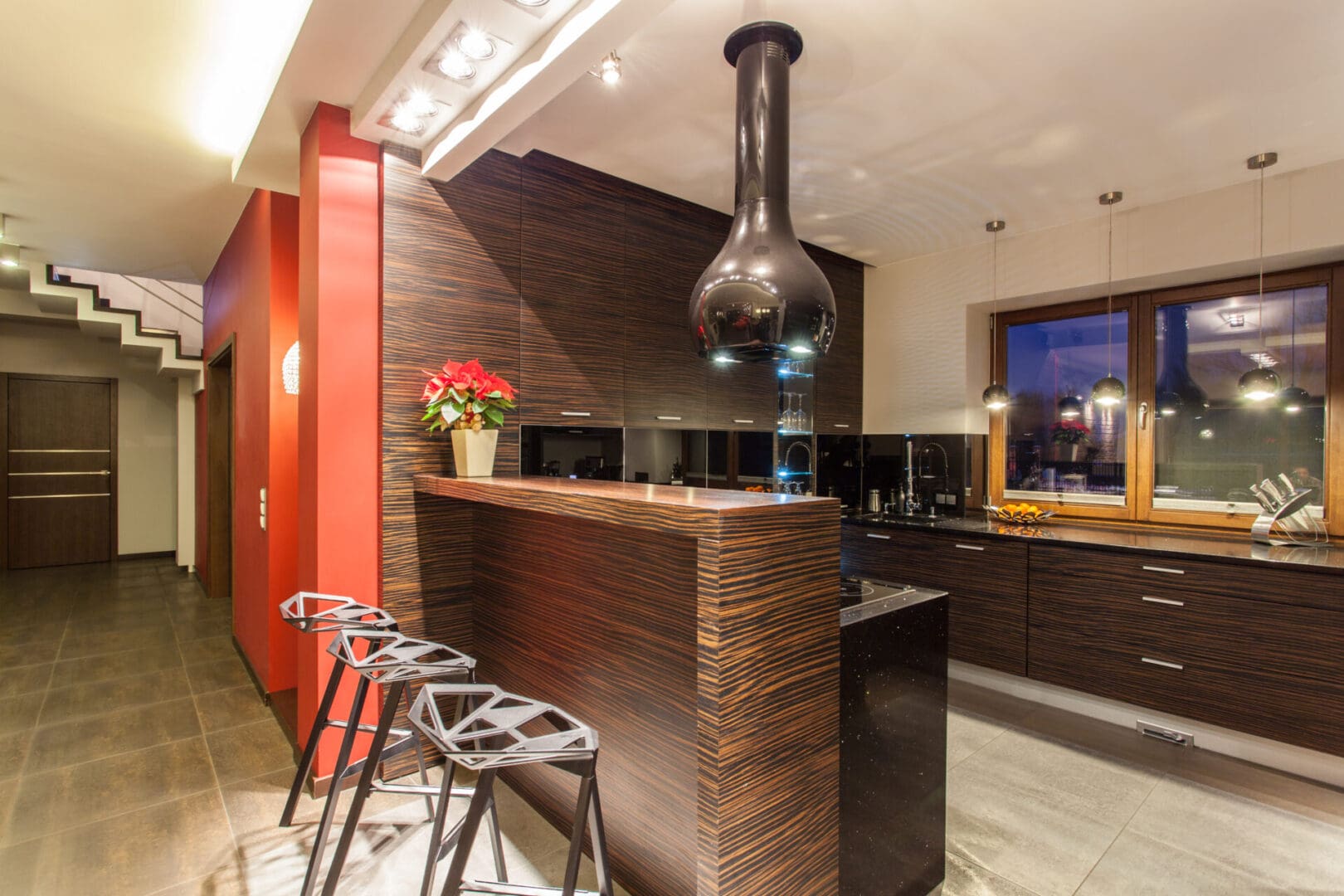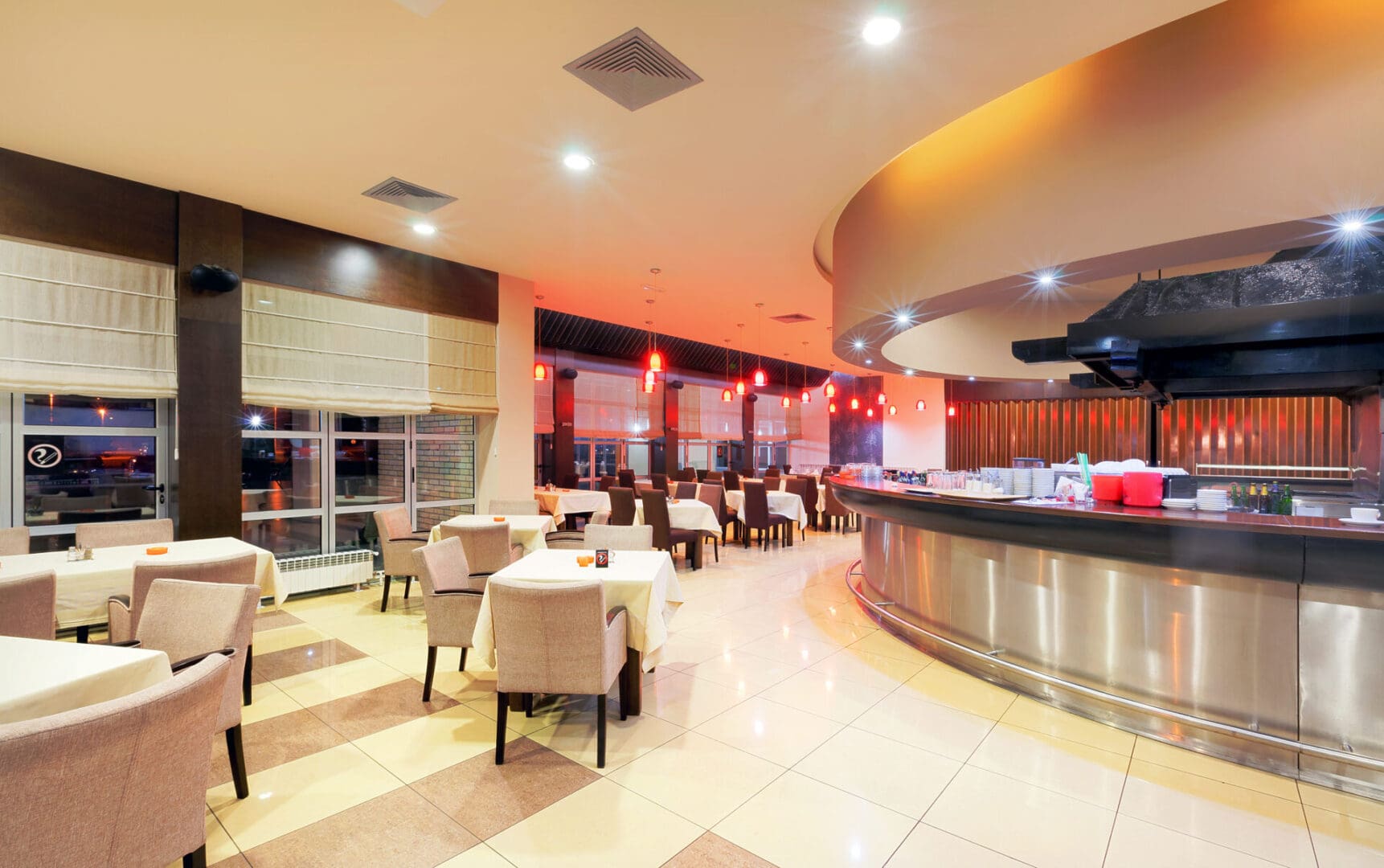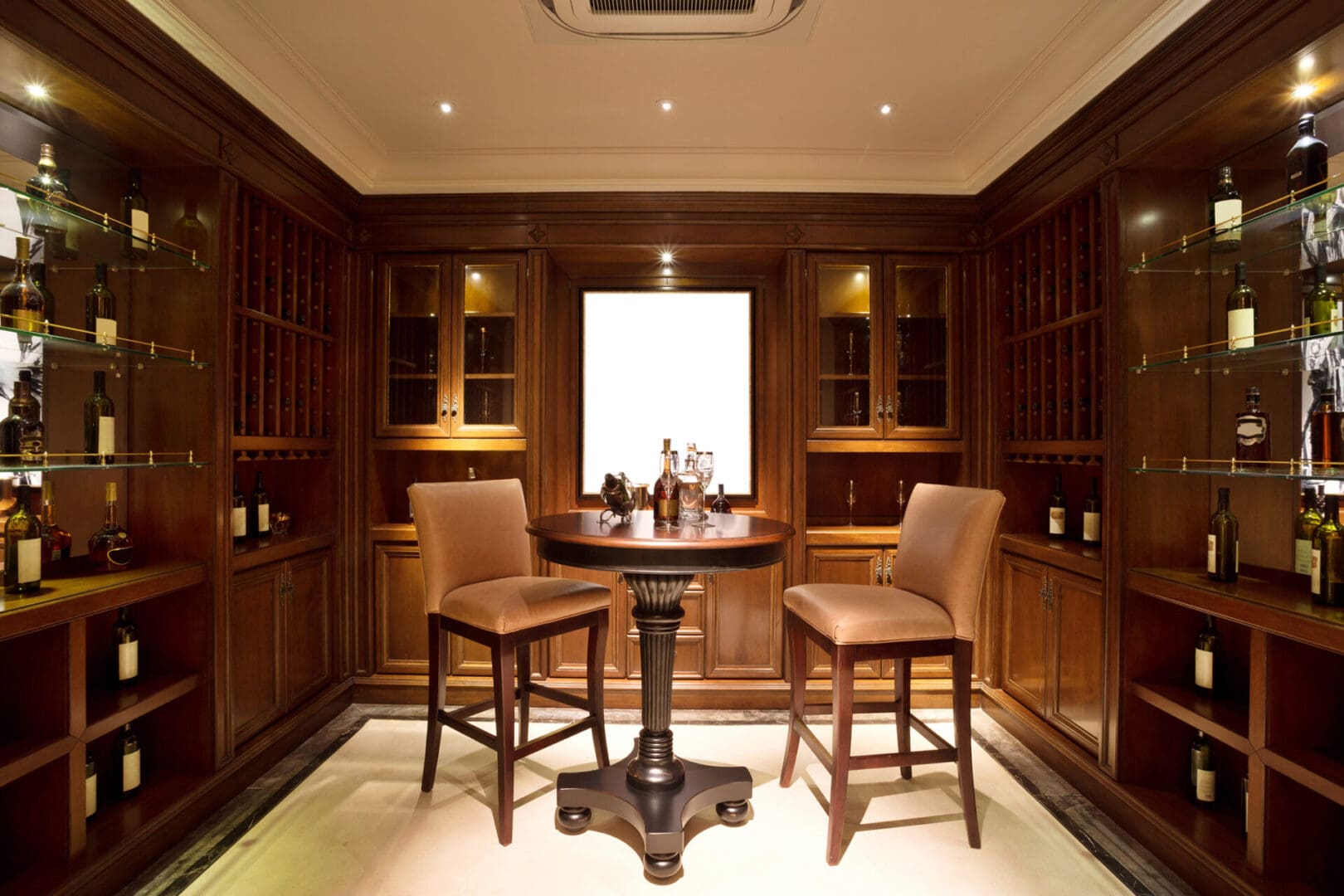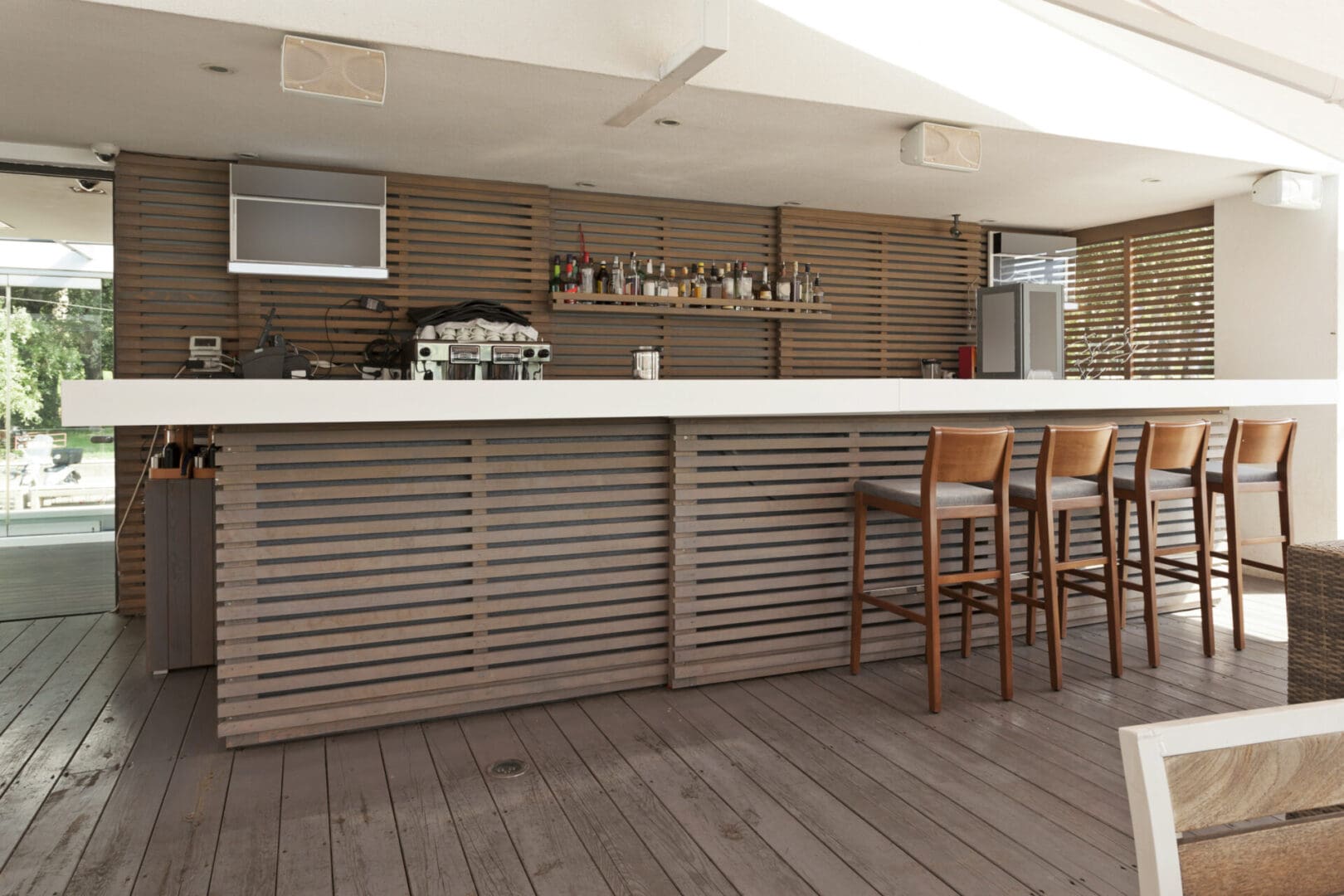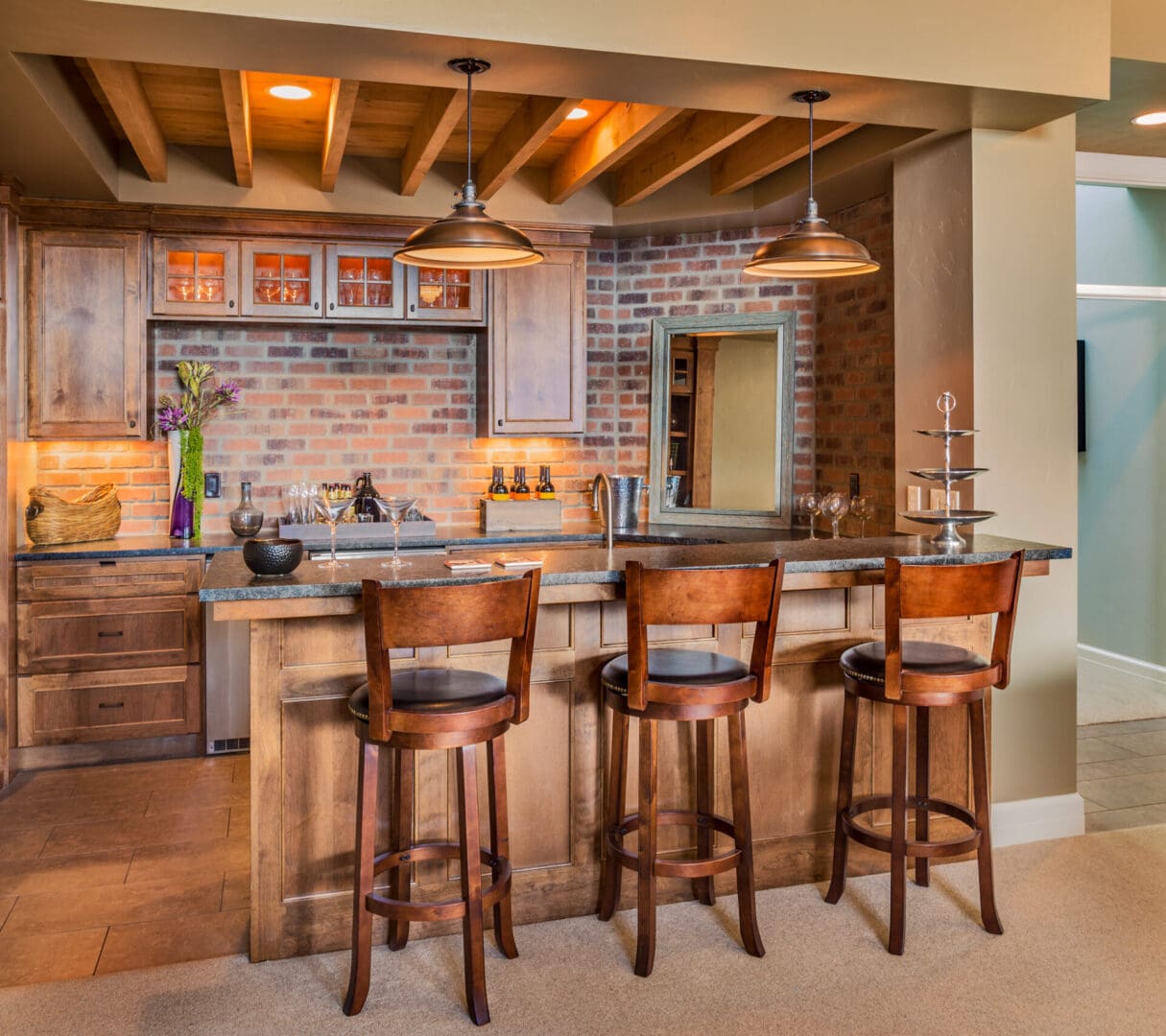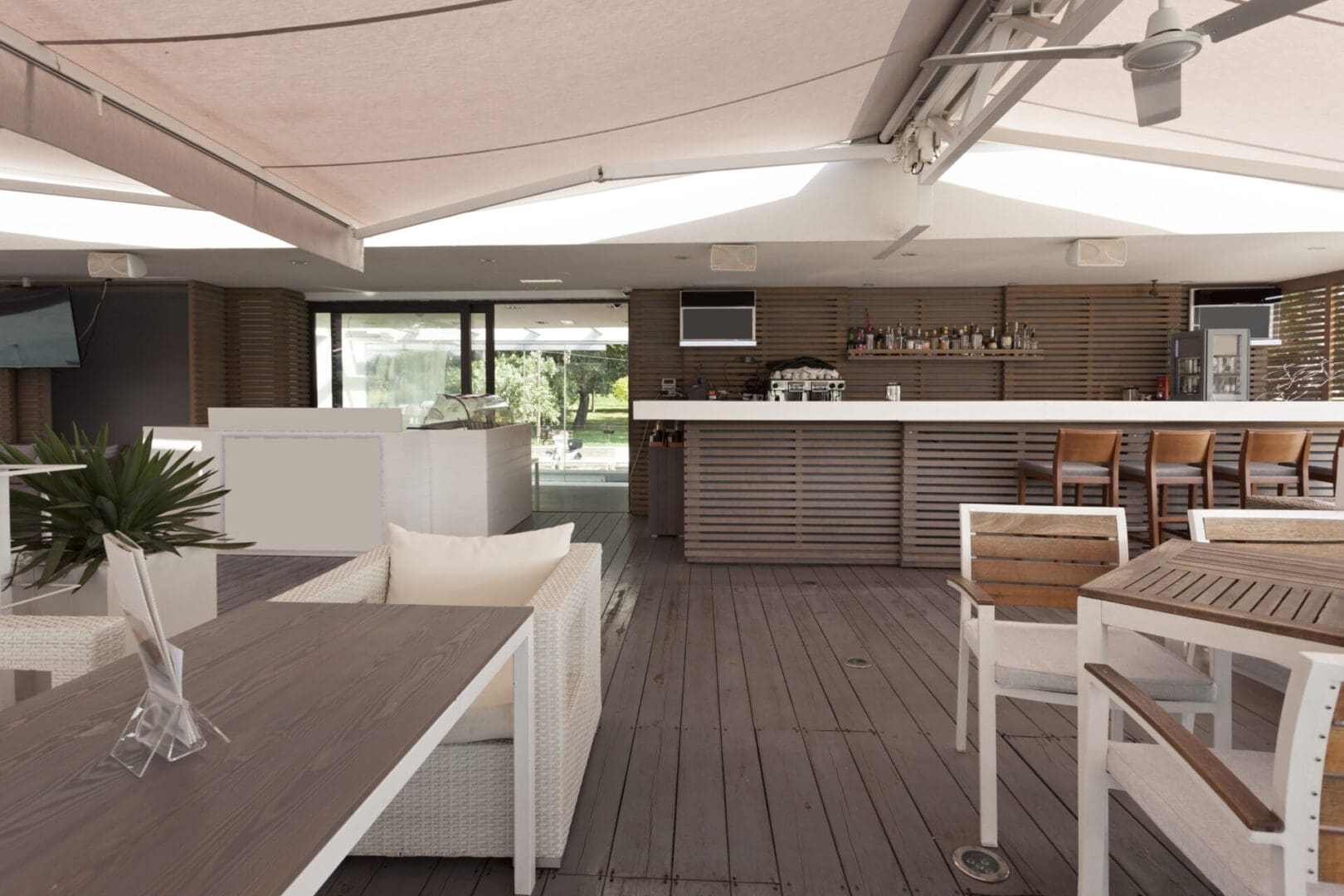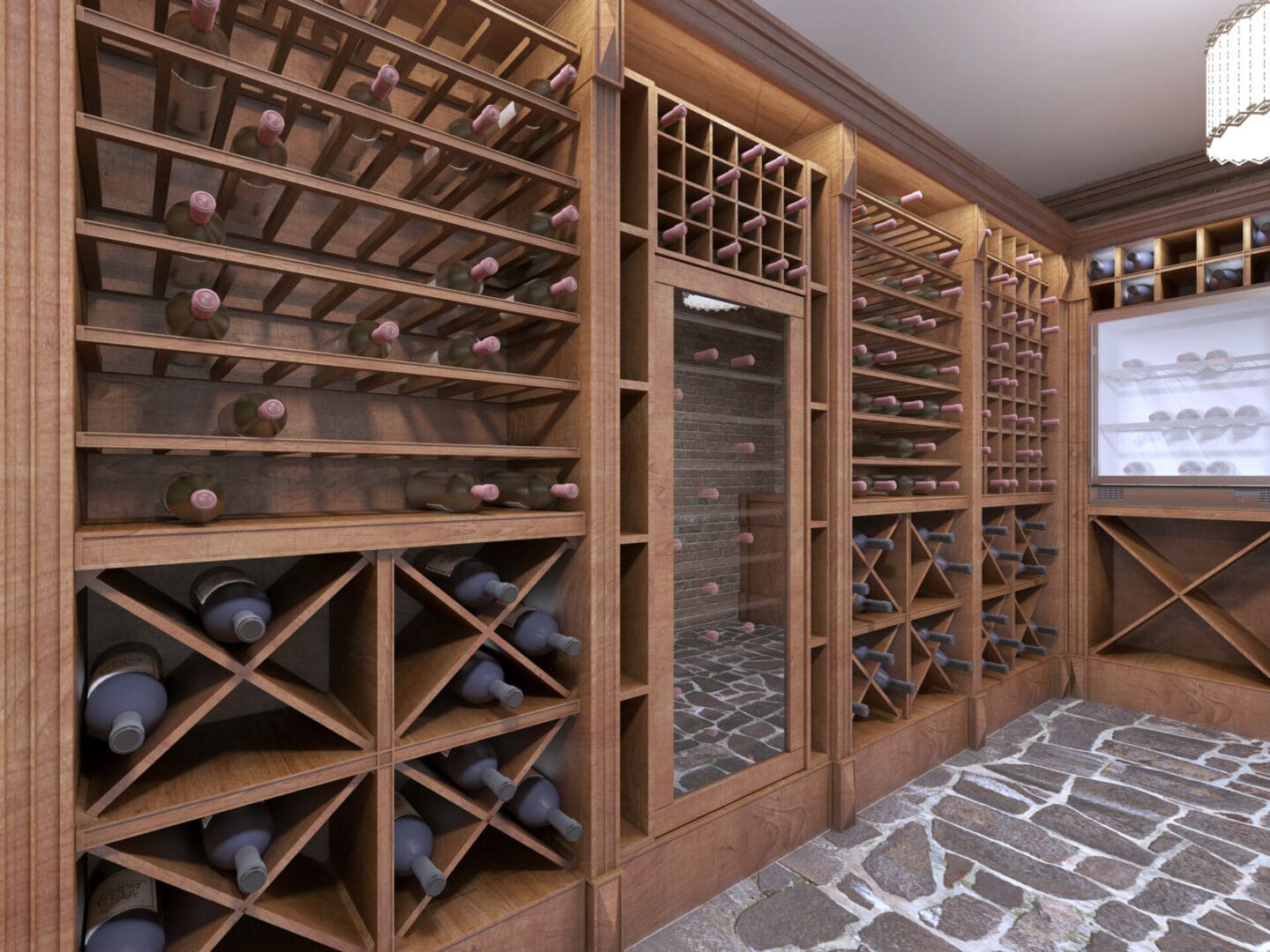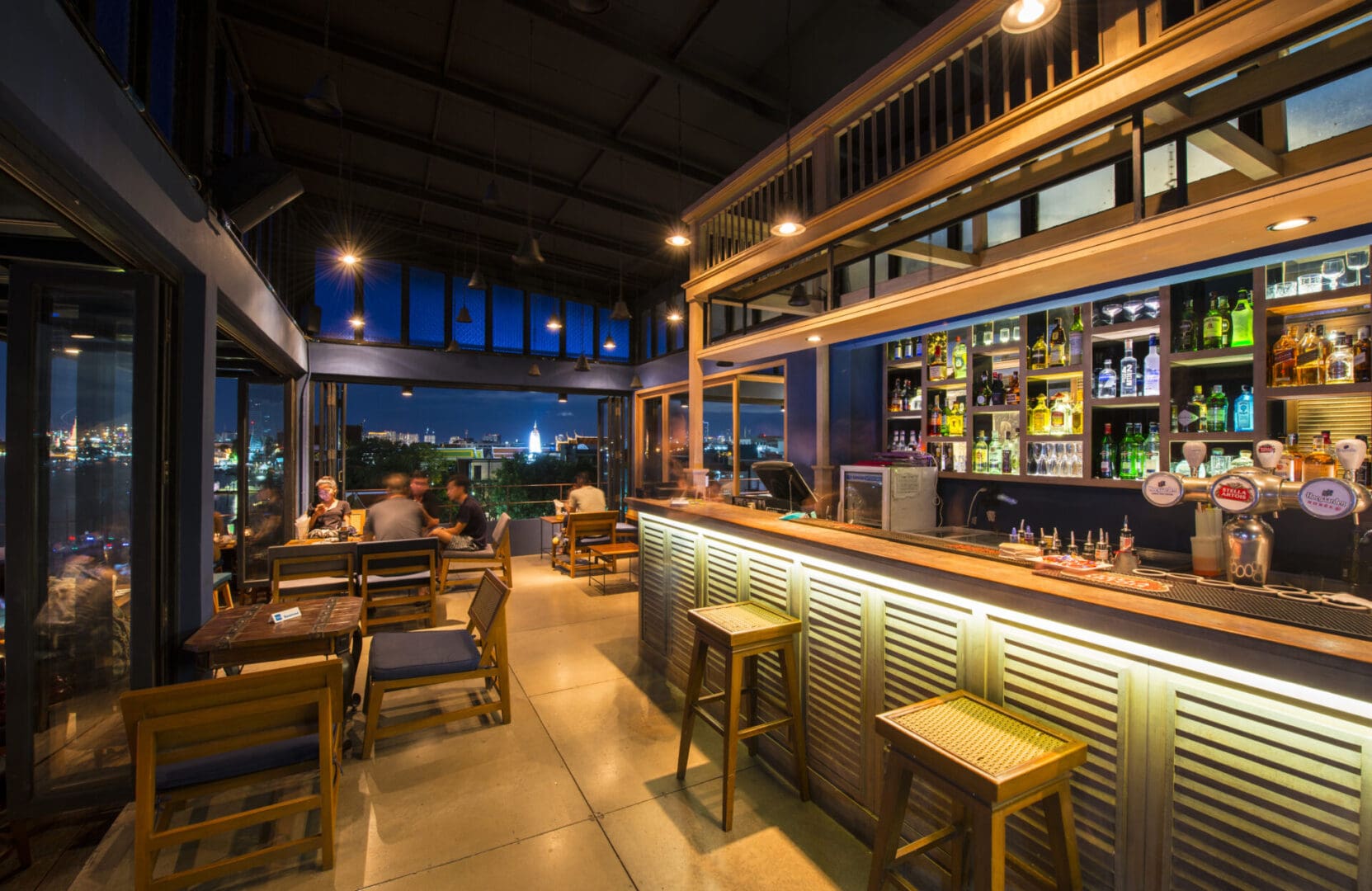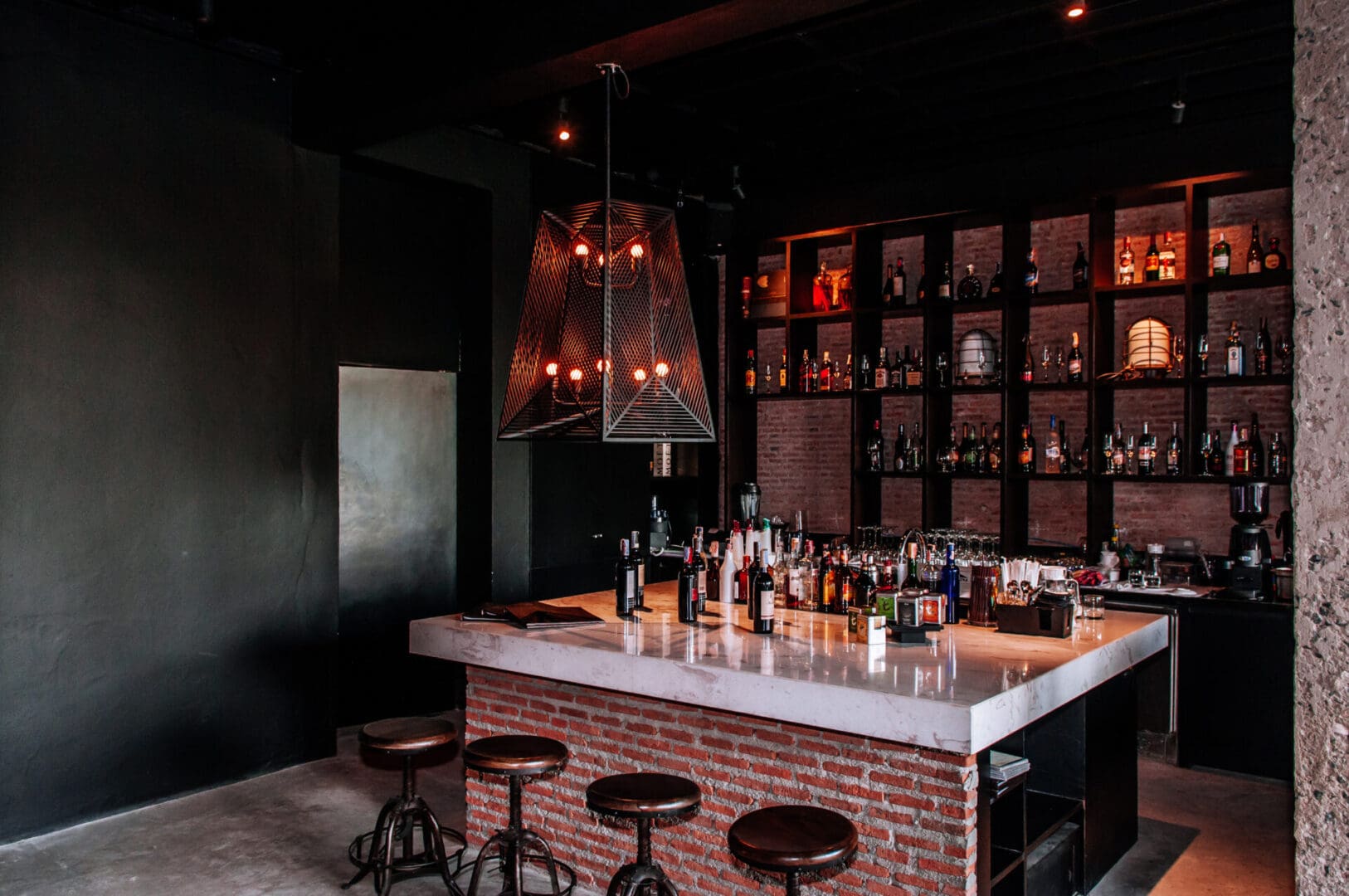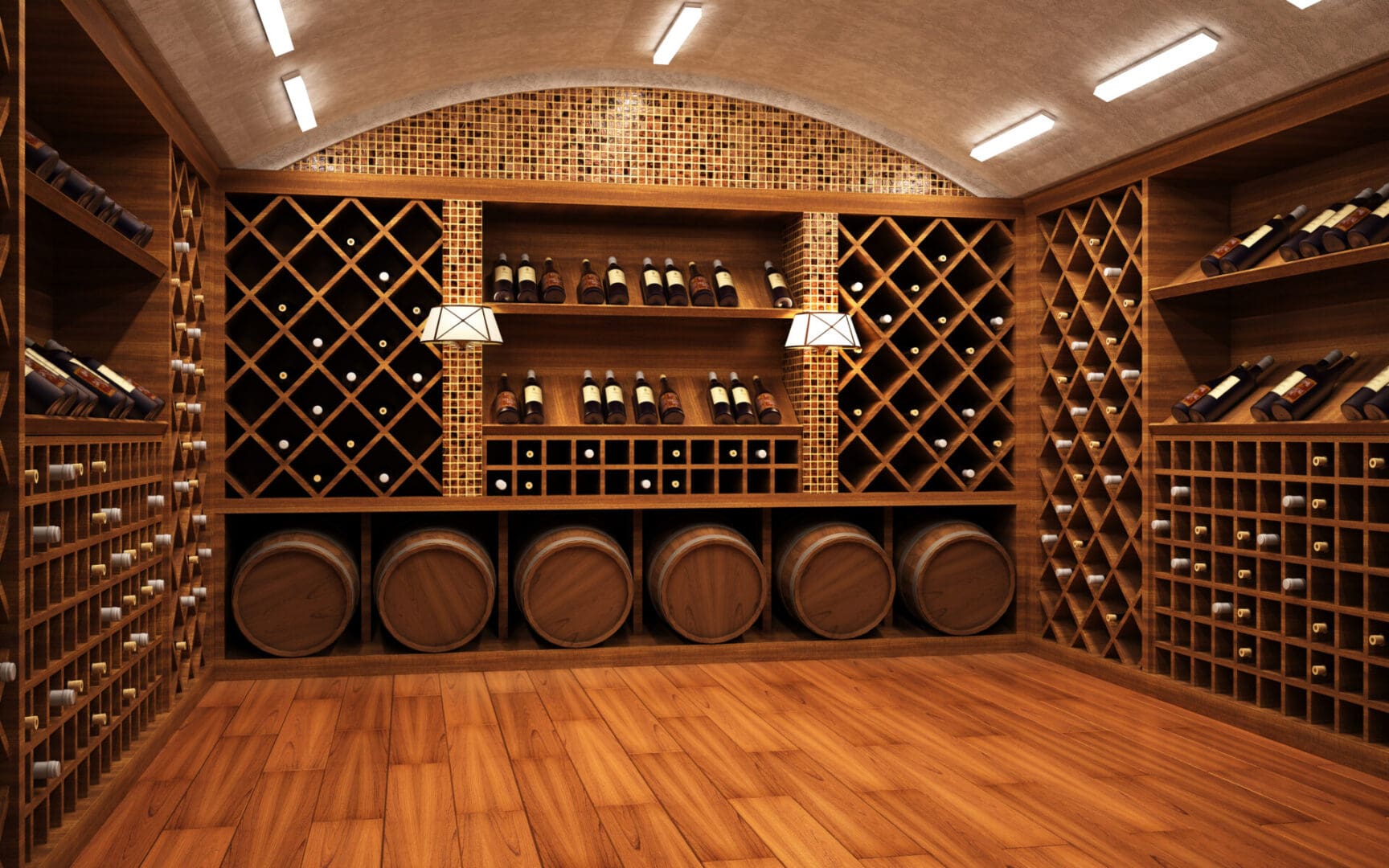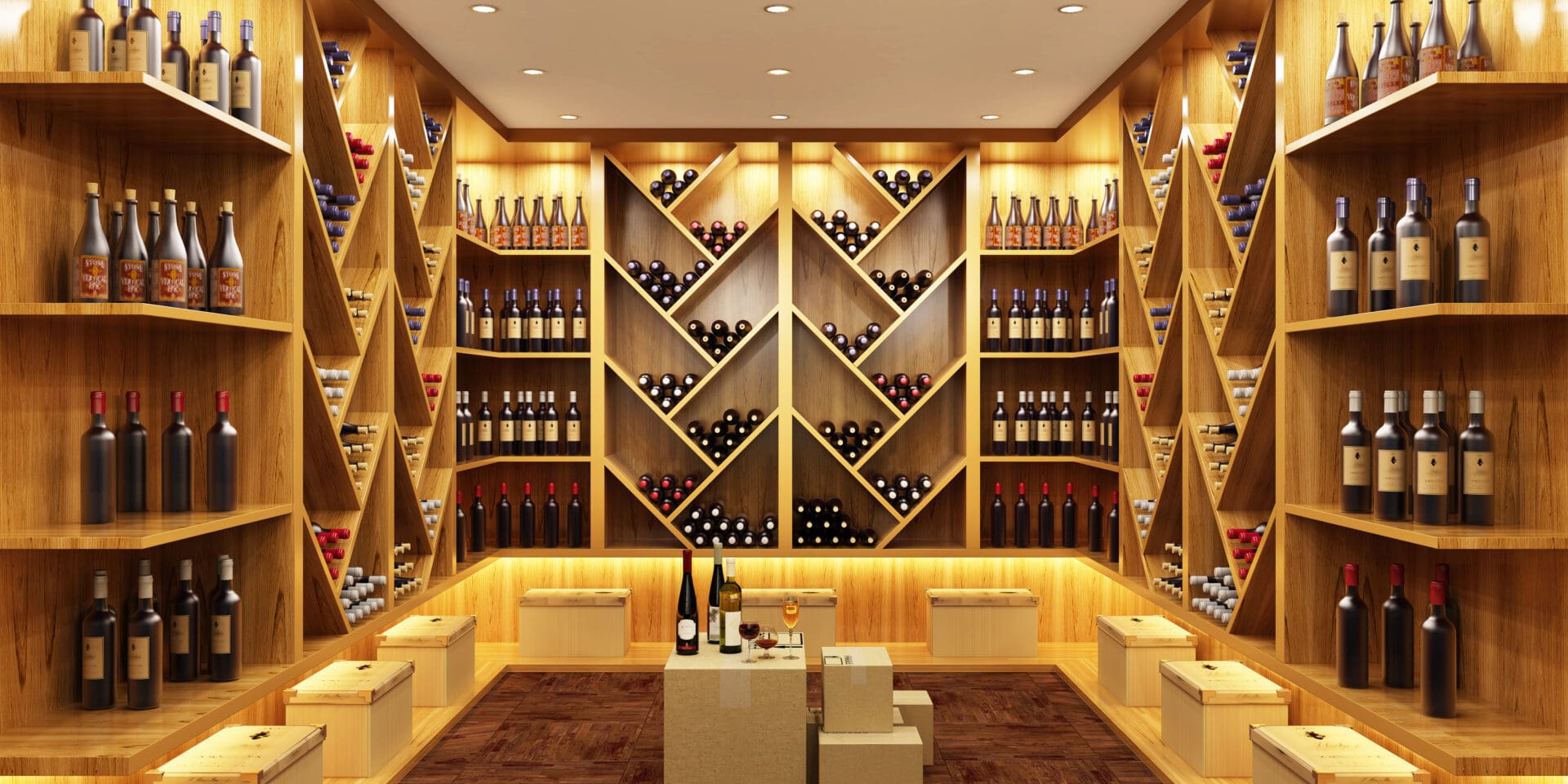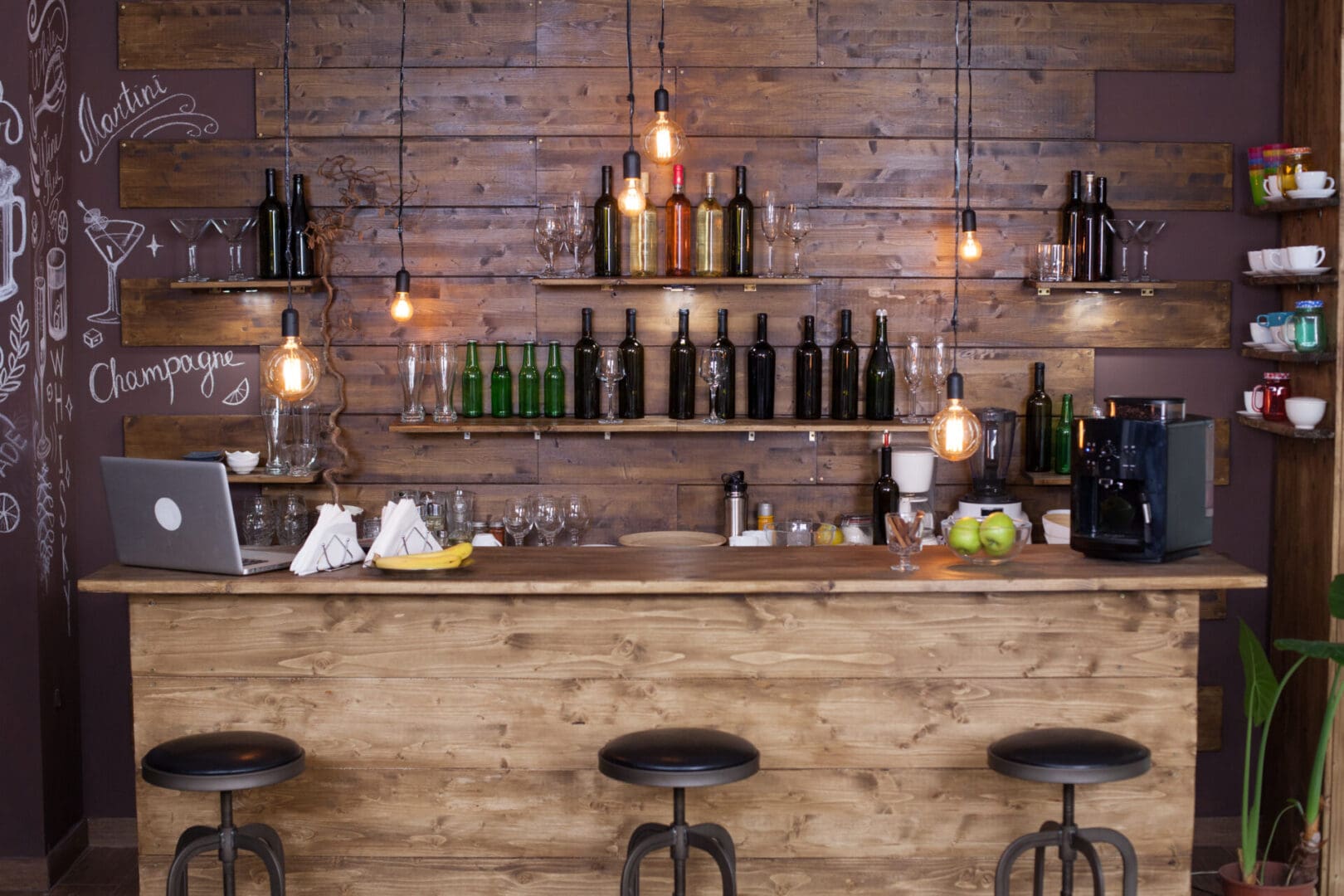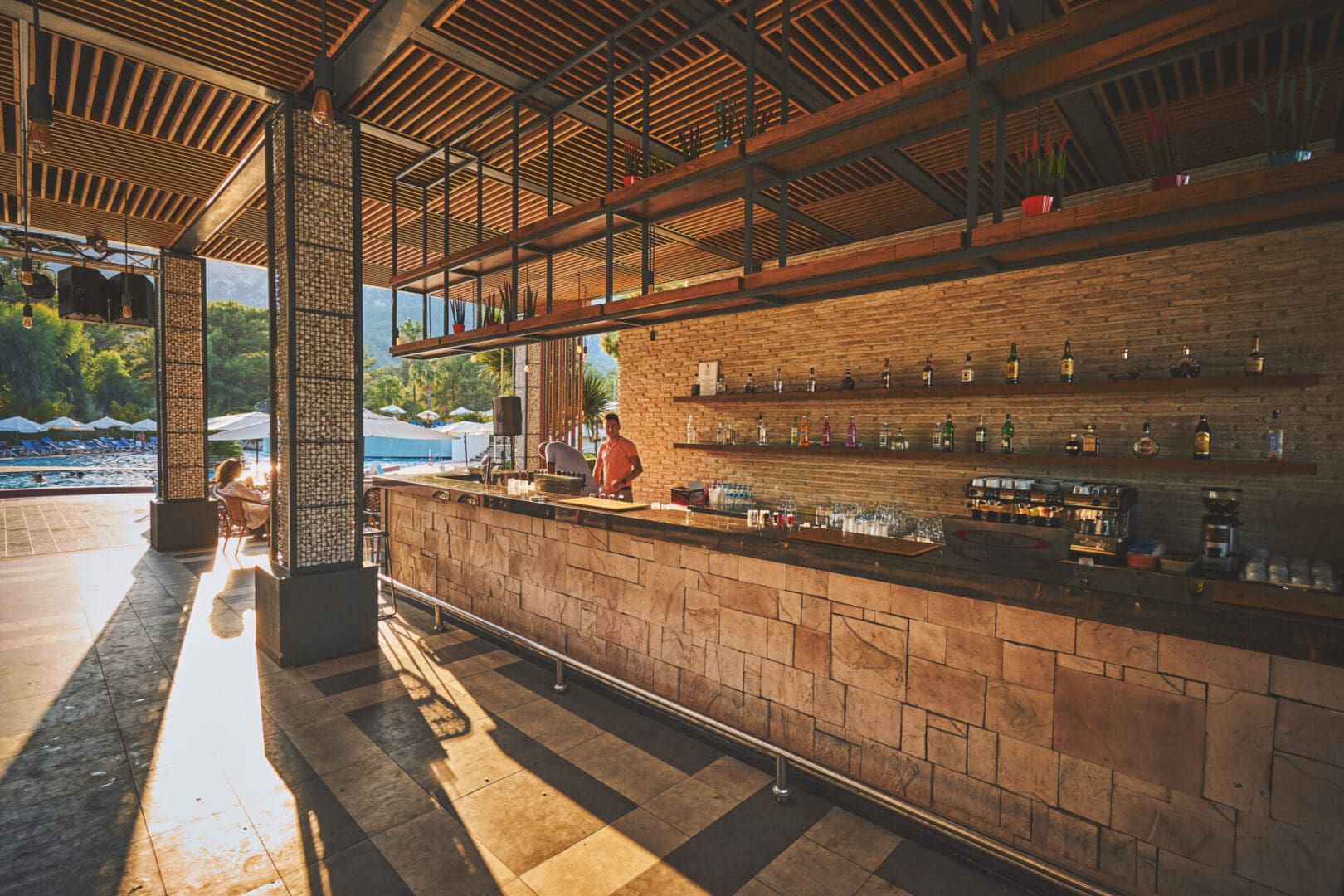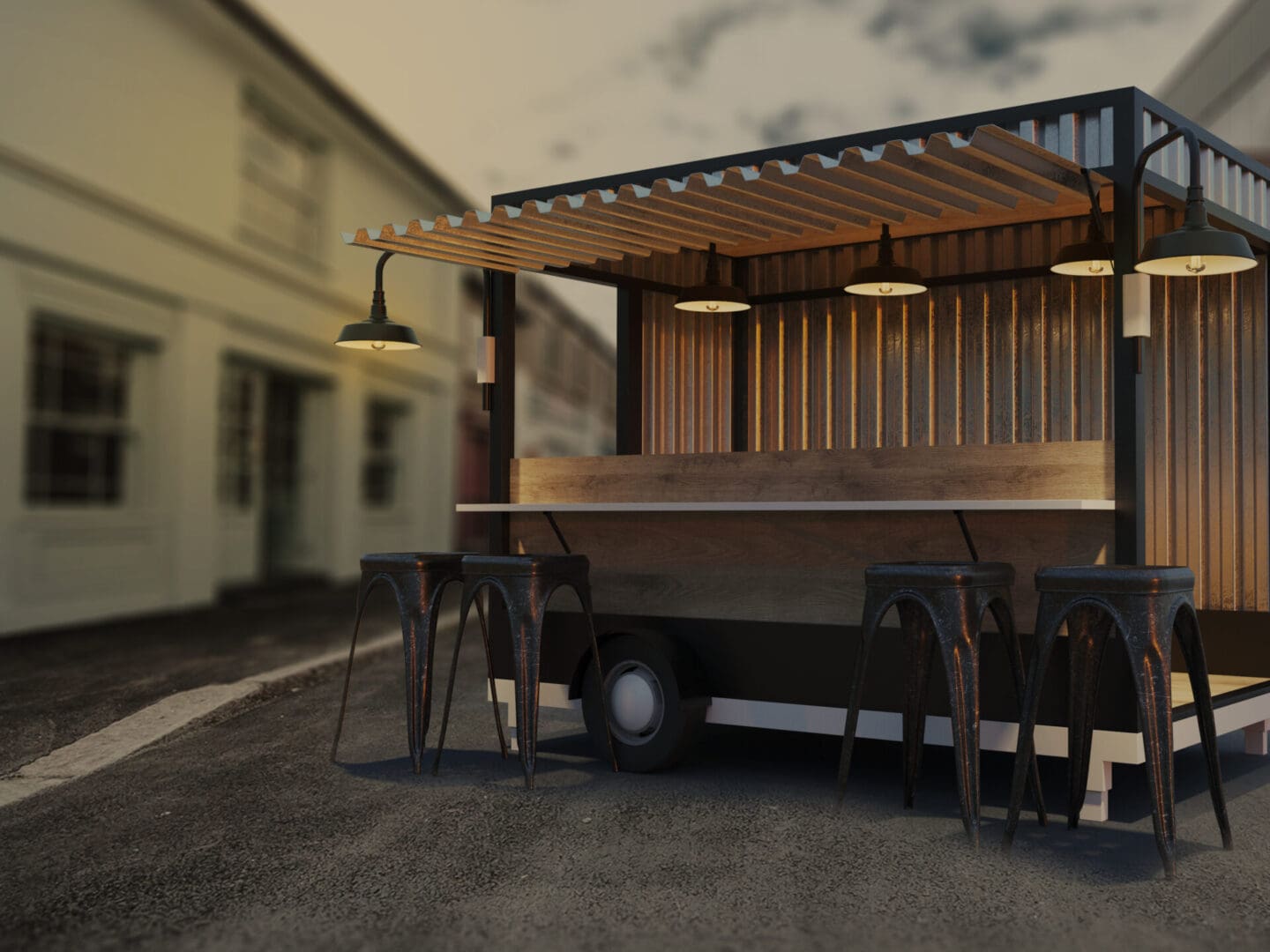BAR WINE CELLAR
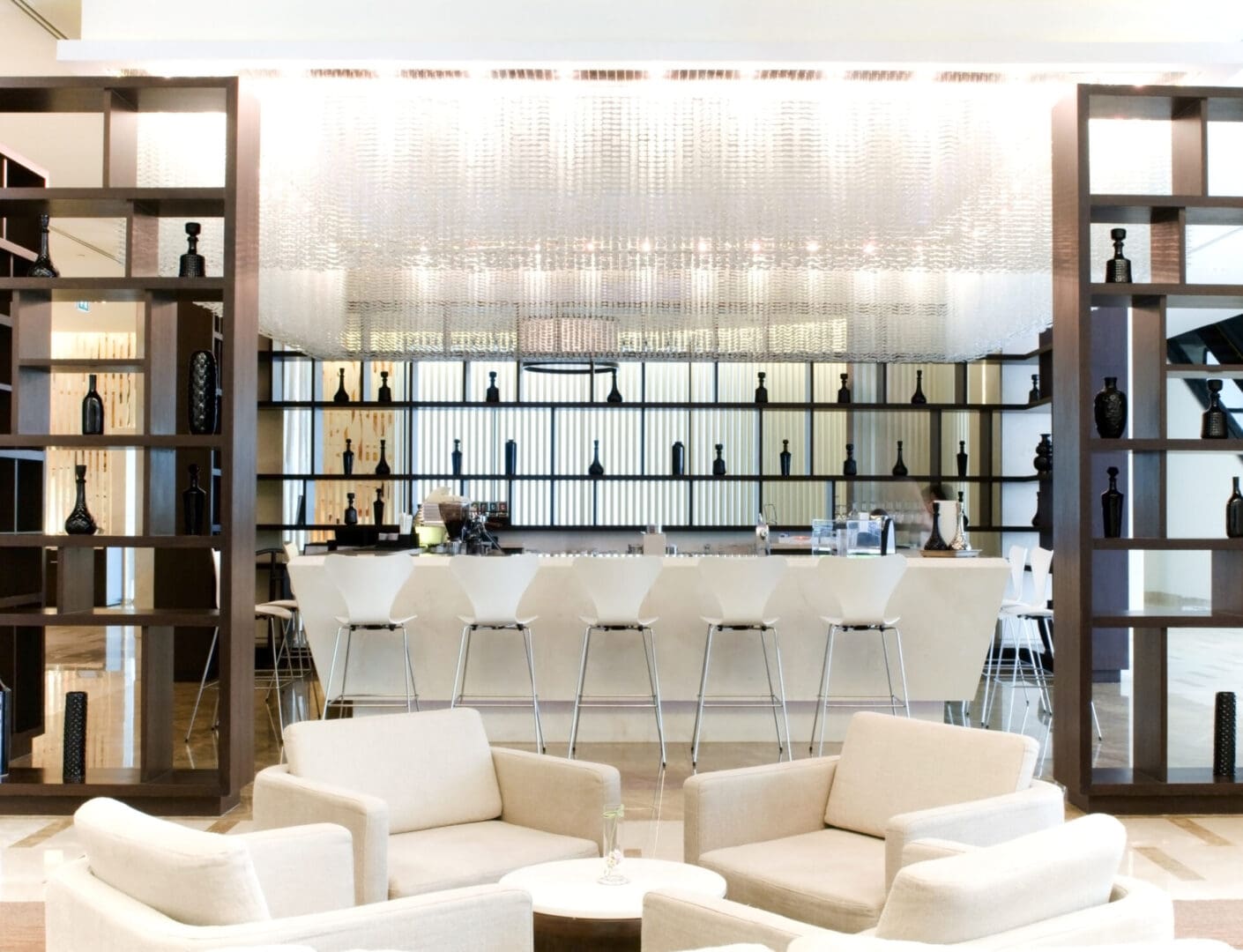
Bar/Wine Cellar
A wine cellar is a place where wine is stored in glass bottles, wooden barrels, or, less commonly, carboys, amphorae, or even plastic vessels. A climate control system keeps crucial parameters like temperature and humidity in an operating wine cellar under control. Passive wine cellars, on the other hand, are not climate-controlled and are typically built below to minimize temperature changes. If you have a functioning cellar, you also have a functioning wine cellar cooling equipment.
Temperature and humidity are managed according to necessity in active wine cellars, while the room's continual coolness is maintained. Because an active wine cellar is hermetically sealed, it is typically smaller than the basement. When a functioning wine cellar is very small, it is sometimes referred to as a wine closet.
Temperature and humidity are not taken into account in passive wine cellars. Passive wine cellars are typically built in basements, where temperature changes are less extreme. Passive wine cellars require a natural low temperature, which is why they are typically built below in damp, chilly locations.
Wine is typically stored at temperatures ranging from 7 to 18 degrees Celsius (45 to 64 degrees Fahrenheit). A temperature of 13 °C (55 °F), similar to that found in French wine caves, is good for both short- and long-term storage and maturing. At a lower temperature, the wine matures differently and more slowly than it does at a higher temperature. When the temperature variations are severe, such as 14 degrees or more, the wine will breathe through the cork, hastening the ageing process. Wines will age naturally between 10–14 °C (50–57 °F).
Make Your Own Space
Everyone has their style. The size and design of the wine cellar are critical considerations. It's not easy to keep a wine cellar in good shape. When it comes to a wine cellar, there are a lot of factors to consider. Here is a list of a few pointers that can assist you in properly maintaining your wine cellar. Numerous factors must be considered while designing a wine cellar.
The Entrance to the Wine Cellar
The space is enhanced by the presence of wine cellar doors. You can personalize the doors by adding other features such as an automatic door button. Custom glass wine cellar doors will be created by RA-V General Construction Corp. Construction Service. The cost of the door rises as the number of features increases. Although a glass door can be installed in the wine cellar, it is not suggested in places where the cellar door would be exposed to direct sunlight.
Service for Wine Cellar Design
RA-V General Construction Corp. can assist in the design of a wine cellar that is simple to maintain and blends in with the existing architecture of the home or company. It benefits you, the customer. The primary goal of a wine cellar is to preserve the flavour of the wine. Wine is a sensitive commodity that spoils quickly when exposed to heat, light, humidity, or drastic temperature changes. If the wine is not stored properly, part of its tang, colour, fragrance, and body may be lost.
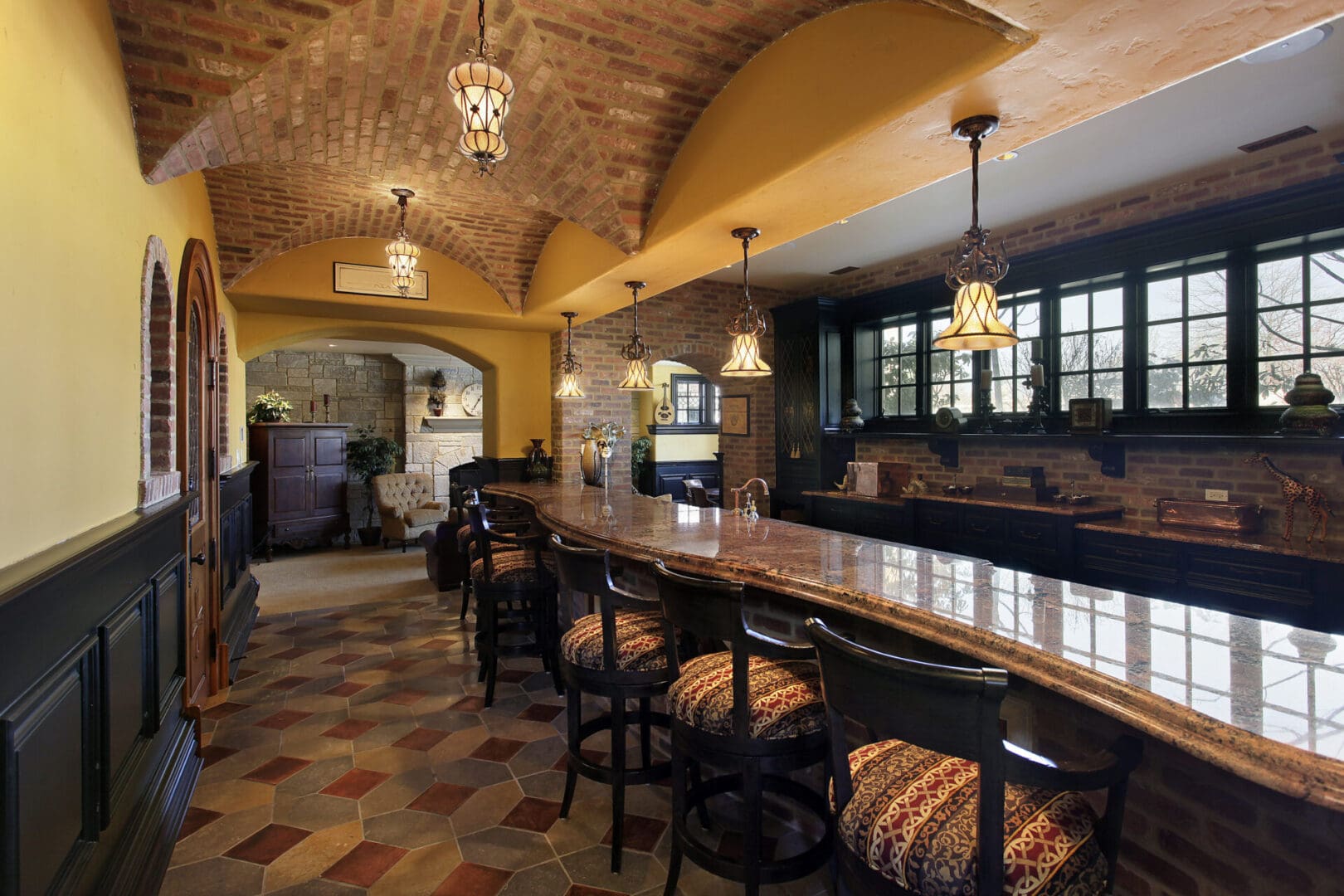
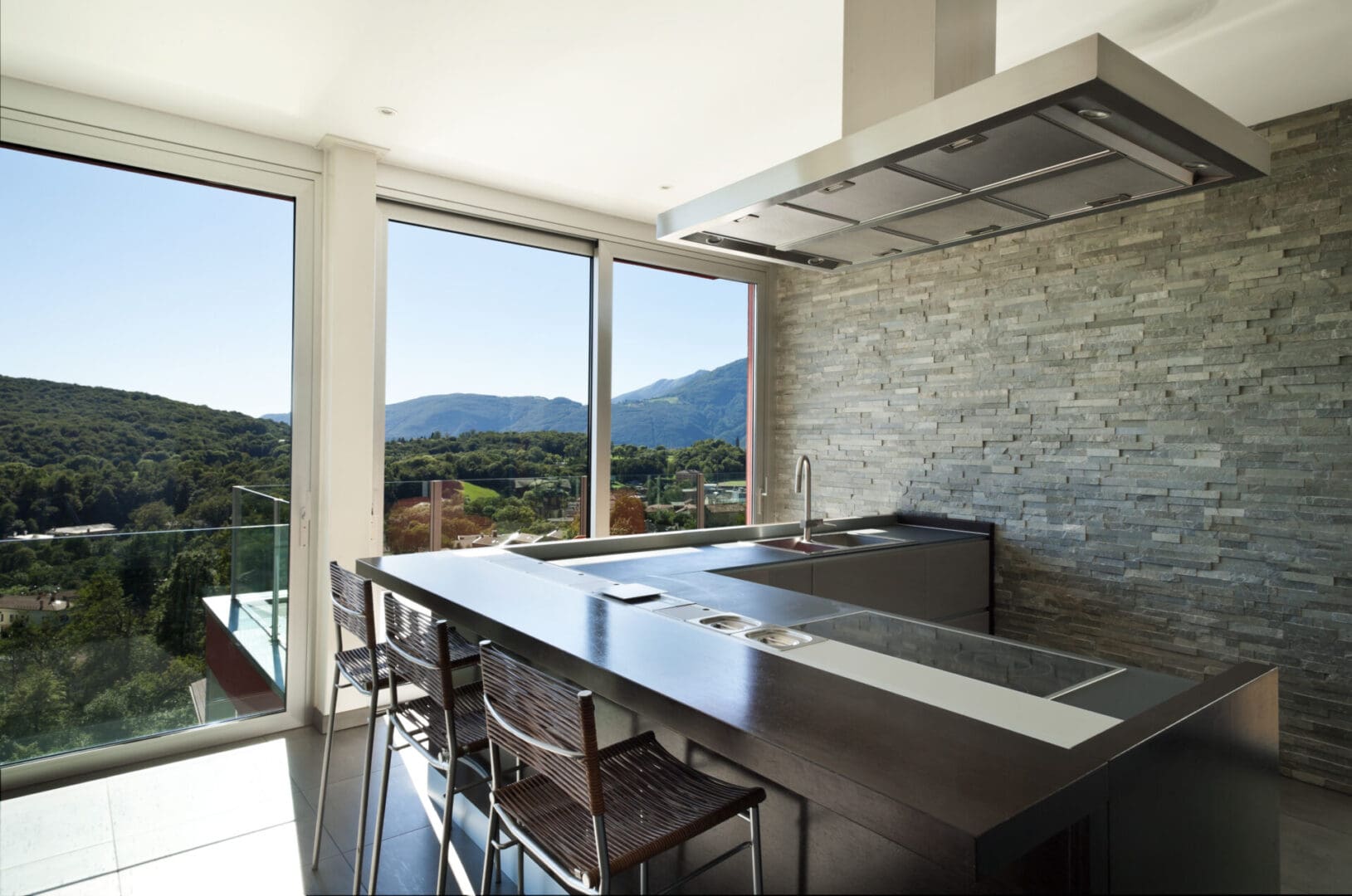
The Floor of a Wine Cellar
Wood flooring is thought to be ideal for wine cellars. Wood is the greatest material for flooring since it can withstand changes in humidity levels. The use of carpets and rugs in wine cellars should be avoided. Carpet and rugs cannot withstand high humidity levels and may become infected with fungi.
Cooling System for Wine Cellars
Wine cellar cooling systems are not to be confused with house air conditioners. The cooling system in a wine cellar is not like that of a household air conditioner. Along with the temperature, some wine cellar cooling systems also keep track of humidity levels. The most crucial element to keep in mind when protecting wine is to keep it cool. It also keeps the wine's original flavour, colour, and smell.
Racks for Wine
Wooden wine racks are the meat on the bones of wine cellar design and are an essential component. Of course, all wood wine racks must be able to safely hold glass bottles of wine, which means they must be anchored top and bottom, but not if this causes them to vibrate. If the ceiling above is a busy hallway or the floor of a busy area, the racks may not be tied in at the top. Make sure the rack is rigid and not vibrating. Racks are also available in a variety of sizes. Choose the rack's height based on the height of your room.
Different materials, such as metal, wood, and plastic, are used to make racks, but wood is usually the best because it decreases vibrations. When metal racks are hefty and stiff, they have an attractive appearance. If you plan to purchase wooden racks, make sure the wood is of good quality and not aromatic, as wine can absorb the scent of cedar and other wood species through the corks.
Other Considerations
Numerous more variables might enhance the appeal of your wine cellars. In today's market, there is a wide range of dim and stylish lights. These lights will make the wine look more enticing while yet not spoiling it. To make your wine cellar more appealing and unique, you can add more things and features. A wine cellar professional can provide you with further suggestions based on your budget and available space. As a result, you should also seek advice from a wine cellar expert.


